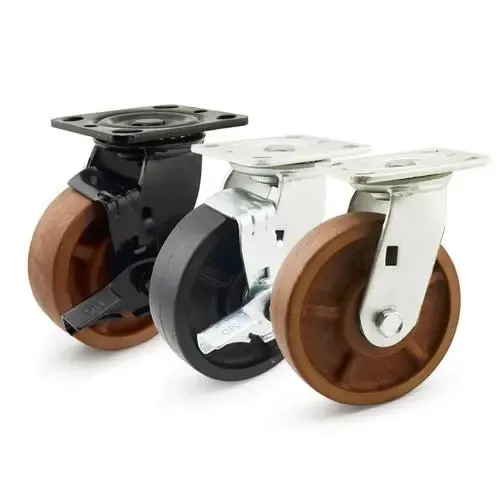I. Choosing the Right Casters Is Very Important
When it comes to equipment or furniture that needs to be mobile, casters are an essential component. Casters are small wheels that are attached to the bottom of equipment or furniture, allowing it to roll and move around with ease. There are many different types of casters available, each designed for specific applications.
Choosing the right caster for your application is crucial to ensure that your equipment or furniture functions properly and can be moved safely and efficiently. In this article, we will provide you with a guide on how to choose the right caster for your application.
II. Understanding Your Application of Casters
Before selecting a caster, it’s essential to understand your application’s requirements. Consider the following factors:
A. Casters Weight and Load Capacity
When it comes to weight and load capacity, it’s important to choose a caster that can safely support the weight of your equipment or furniture. This requires taking into account not just the weight of the object itself, but also any additional weight that may be added due to the load being carried. Be sure to choose a caster with a load capacity that exceeds the weight of the load.
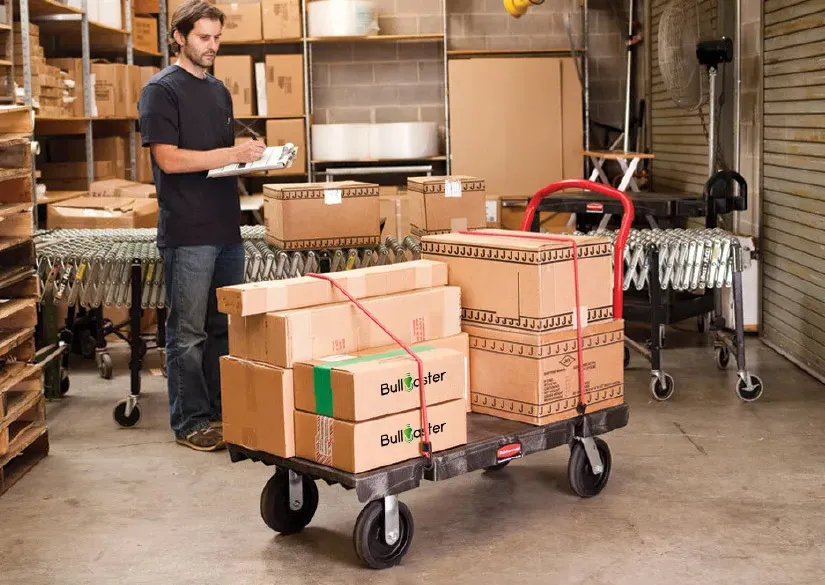
B. Floor Surface and Environment
The floor surface and environment in which your application will be used also play a crucial role in caster selection. Smooth surfaces typically require casters with hard rubber or polyurethane wheels, while uneven or rough surfaces may require pneumatic or semi-pneumatic wheels for better shock absorption. Additionally, outdoor environments may require casters that are resistant to moisture, rust, and corrosion.
C. Casters Maneuverability and Mobility Requirements
The maneuverability and mobility requirements of your application will also impact caster selection. For example, swivel casters are ideal for applications that require greater maneuverability and directional control, while rigid casters provide greater stability and straight-line tracking. Additionally, dual-wheel casters can provide greater load capacity and stability, while single-wheel casters are more compact and easier to maneuver in tight spaces.
D. Frequency of Use and Duty Cycle
The frequency of use and duty cycle of the equipment or furniture should also be taken into account. Casters that will be used frequently or for extended periods should be made of durable materials and designed for heavy use. Casters that will be used infrequently or for light-duty applications can be made of less expensive materials.
III. Types of Casters
A. Swivel Casters vs. Rigid Casters
Swivel casters have a 360-degree rotation capability, which allows for greater maneuverability and easier turning. This type of caster is ideal for equipment or furniture that needs to move in multiple directions. On the other hand, rigid casters only move in a straight line and are better suited for equipment or furniture that only needs to move in one direction. It’s important to note that using a combination of swivel and rigid casters on equipment or furniture can provide the best of both worlds, allowing for easy maneuverability and straight-line movement.
B. Single Wheel Casters vs. Dual Wheel Casters
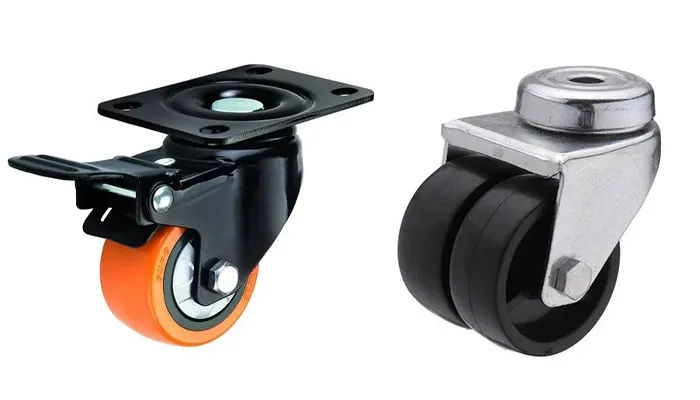
Single-wheel casters are designed to support a load with a single wheel, while dual-wheel casters use two wheels to support the load. Dual wheel casters distribute the load more evenly and provide better stability, making them ideal for heavier equipment or furniture. Single-wheel casters, on the other hand, are more compact and better suited for lighter loads.
C. Material of Construction
The material of construction for the caster is also an important consideration. Common materials include rubber, polyurethane, nylon, and metal. Rubber and polyurethane casters provide excellent shock absorption and are suitable for use on uneven surfaces. Nylon casters are highly resistant to wear and tear and are ideal for use on smooth surfaces. Metal casters are highly durable and can handle heavy loads, making them ideal for industrial applications.
D. Specialized Casters
There are also specialized casters available for specific applications. For example, heat-resistant casters are designed for use in high-temperature environments, while chemical-resistant casters are ideal for use in environments where there may be exposure to harsh chemicals. Anti-static casters are designed to prevent static electricity buildup, making them ideal for use in environments with sensitive electronic equipment. It’s important to select a caster that is specifically designed for your application to ensure optimal performance and safety.
IV. Choosing the Right Casters
When it comes to selecting the right caster for your application, there are several important factors to consider.
A. Matching the caster to the application requirements
The first step in choosing the right caster is to match it to the requirements of your application. Consider the weight of the equipment or furniture, the floor surface, maneuverability requirements, and the duty cycle. Matching the caster to these requirements will ensure that your equipment or furniture can move safely and efficiently.
B. Compatibility with the equipment or furniture
The caster you choose should also be compatible with your equipment or furniture. Ensure that the caster is the right size and has the necessary mounting options to attach to your equipment or furniture. This will ensure that the caster can provide the necessary support and stability.
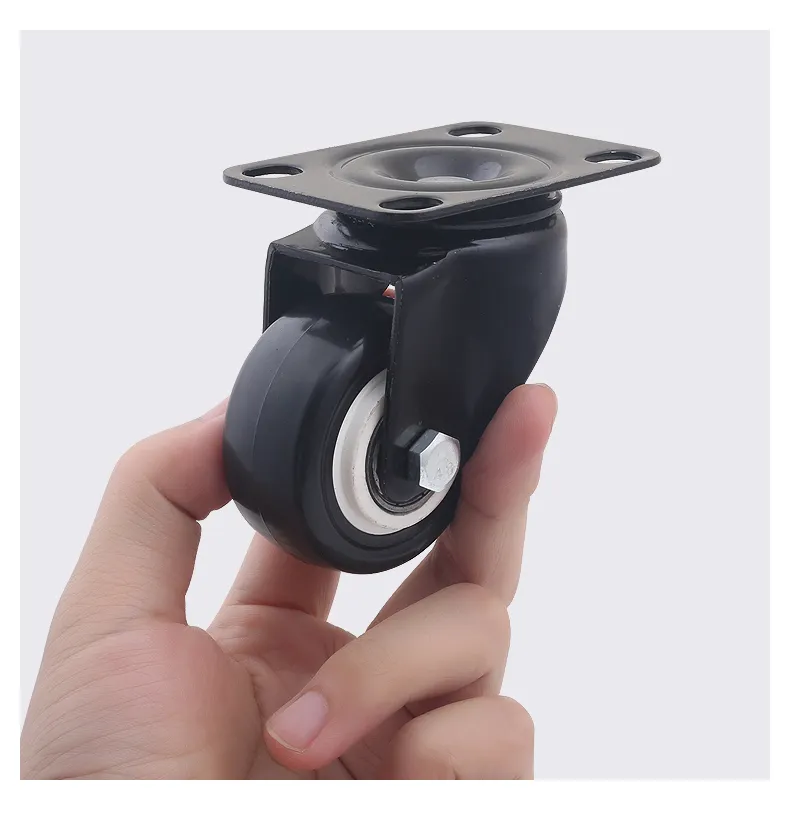
C. Choosing the right size and load capacity
Choosing the right size and load capacity is crucial when selecting a caster. The caster should be able to support the weight of the equipment or furniture and the load it will carry. It’s important to check the load capacity and ensure that it is rated for your specific application.
D. Considering environmental factors and safety standards
Environmental factors and safety standards should also be taken into consideration when selecting a caster. For example, if the equipment or furniture will be used outdoors or in wet environments, corrosion-resistant casters may be necessary. Additionally, it’s important to consider safety standards and regulations when selecting a caster for certain applications, such as those in the medical or food industry.
In conclusion, choosing the right caster for your application is crucial for ensuring that your equipment or furniture can move safely and efficiently. By considering factors such as the weight and load capacity, floor surface, maneuverability requirements, and environmental factors, you can select the caster that is best suited for your specific needs. you can check the below table for a quick search.
| Load Capacity | Floor Surface | Recommended Caster Type |
|---|---|---|
| Light (under 300 lbs) | Smooth surfaces | Swivel caster with soft rubber or polyurethane wheel |
| Uneven or rough surfaces | Swivel caster with pneumatic or semi-pneumatic wheel | |
| Medium (300-1000 lbs) | Smooth surfaces | Swivel caster with hard rubber or polyurethane wheel |
| Uneven or rough surfaces | Dual wheel caster with pneumatic or semi-pneumatic wheels | |
| Heavy (over 1000 lbs) | Smooth surfaces | Dual wheel caster with hard rubber or polyurethane wheels |
| Uneven or rough surfaces | Dual wheel caster with pneumatic or semi-pneumatic wheels |
V. Casters Maintenance and Care
Once you have chosen the right caster for your application, it’s important to properly maintain and care for it to ensure optimal performance and longevity.
A. Cleaning and lubrication
Cleaning and lubrication are important steps in maintaining your caster. Regularly cleaning the caster and removing any debris or buildup can help prevent damage and ensure smooth operation. Lubricating the caster’s bearings and swivel mechanism can also help reduce friction and wear, extending the caster’s lifespan.
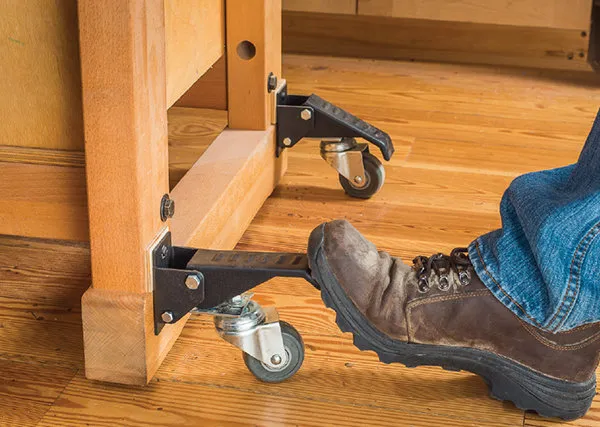
B. Inspection and replacement of components
Regularly inspecting the caster’s components, such as the bearings, raceways, and wheels, can help identify any signs of wear or damage. If any components are damaged or worn, they should be replaced immediately to prevent further damage and ensure safe operation. It’s important to use replacement components that are specifically designed for your caster to ensure compatibility and optimal performance.
C. Best practices for extending caster lifespan
In addition to regular cleaning, lubrication, and inspection, several best practices can help extend the lifespan of your caster. Avoiding overloading the caster, using the caster on the appropriate surface, and avoiding sudden impacts or drops can all help prevent damage and extend the caster’s lifespan. Additionally, storing the caster properly when not in use can help prevent damage and ensure that it is ready for use when needed.
In conclusion, proper maintenance and care are crucial for extending the lifespan of your caster and ensuring optimal performance. Regularly cleaning and lubricating the caster, inspecting and replacing components as needed, and following best practices for use can all help extend the caster’s lifespan and save you time and money in the long run.
VI. Conclusion
Choosing the right caster for your application and properly maintaining it can have a significant impact on the safety, efficiency, and lifespan of your equipment or furniture.
In this article, we discussed the importance of choosing the right caster by considering factors such as weight and load capacity, floor surface, maneuverability requirements, and environmental factors. We also highlighted the importance of proper maintenance and care, including cleaning and lubrication, inspection and replacement of components, and following best practices for use.
When it comes to selecting the right caster and maintaining it, it’s important to take your specific application and requirements into consideration. Consulting with a knowledgeable supplier or manufacturer can help ensure that you choose the right caster for your needs and provide guidance on maintenance and care.
You can get in touch with Bullcaster’s product experts, we can provide you with a free consultation and can provide you with various caster products at the best price.


